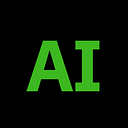Member-only story
Refining RAG: Advanced Evaluation Techniques for Maximizing LLM Potential

Introduction
Imagine you’re working on a question-answering system for medical professionals. A doctor asks, “What are the latest guidelines for treating type 2 diabetes?” Your system, powered by a large language model (LLM) with retrieval-augmented generation (RAG), pulls data from trusted medical sources and crafts a clear response. But what if the answer is slightly outdated or comes from an irrelevant source? In critical applications like healthcare, even small errors can have big consequences.
Ensuring the accuracy, relevance, and efficiency of such a system requires robust evaluation techniques. Advanced RAG evaluation techniques help developers refine and optimize LLMs, ensuring they deliver the most reliable and contextually appropriate outputs possible.
Understanding RAG and Its Importance
RAG combines LLMs with a retrieval system to improve the relevance of outputs. Instead of relying solely on the model’s internal training data, RAG retrieves relevant external documents and uses them to inform the generation process. This makes RAG particularly useful for:
- Dynamic Knowledge Updates: Leveraging up-to-date information without retraining the model.
- Specialized Applications: Providing accurate domain-specific answers by integrating curated datasets.
- Reducing Hallucinations: Anchoring responses in real-world data to minimize fabricated content.
However, achieving optimal performance in a RAG pipeline requires continuous evaluation, as the interplay between retrieval and generation adds layers of complexity.
Key Aspects of RAG Evaluation
To evaluate a RAG system effectively, you need to assess both its retrieval and generation components. This involves:
- Retrieval Quality: Ensuring the system retrieves relevant and accurate documents.
- Generation Accuracy: Verifying the synthesized output aligns with retrieved data and user intent.
- System Efficiency: Balancing computational cost with response quality.

